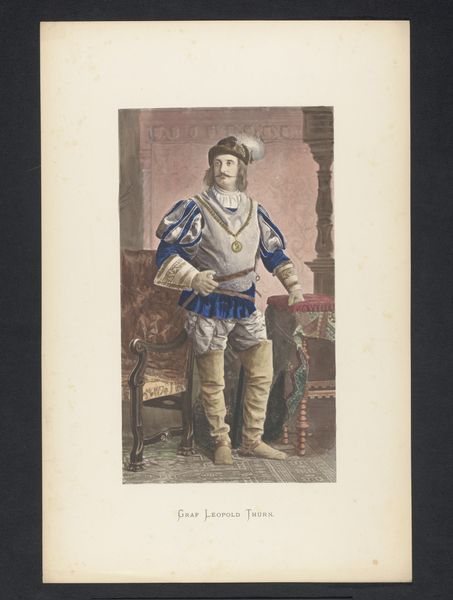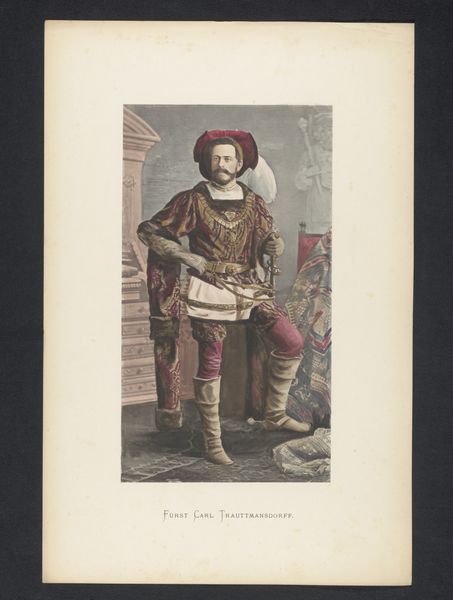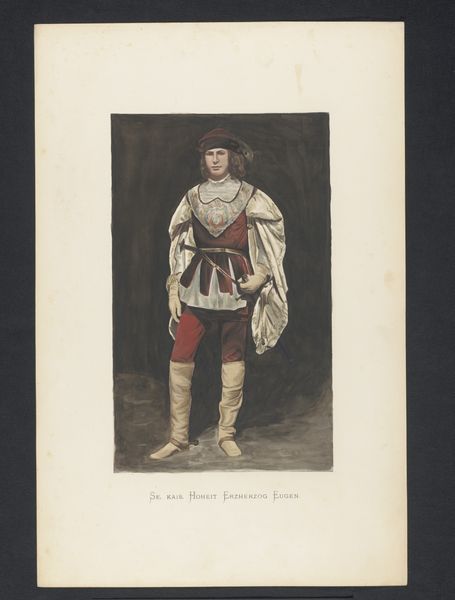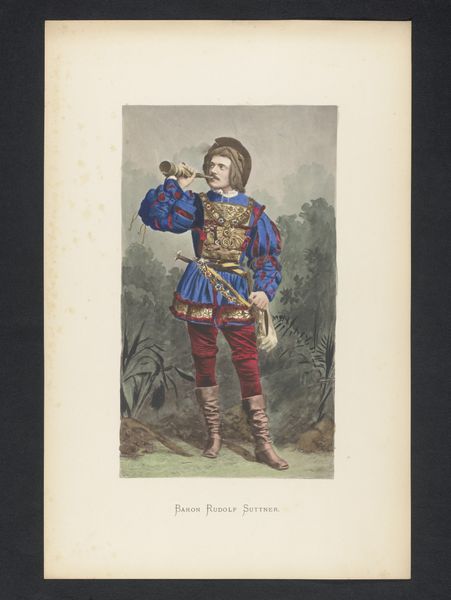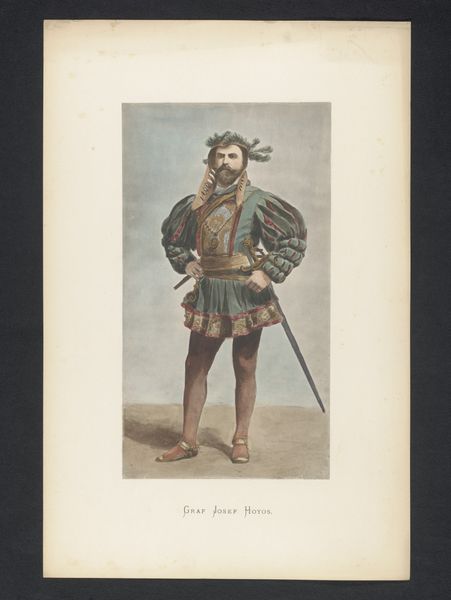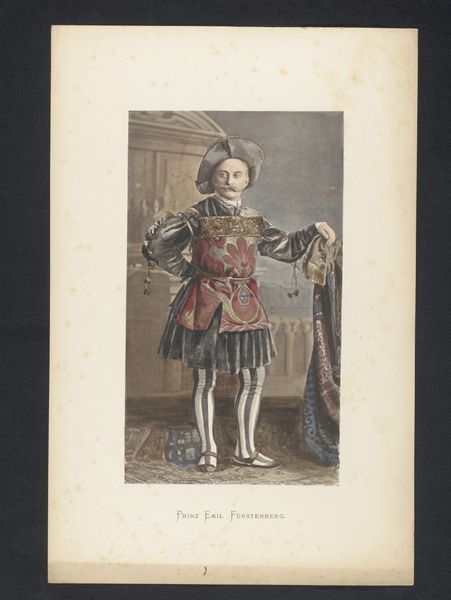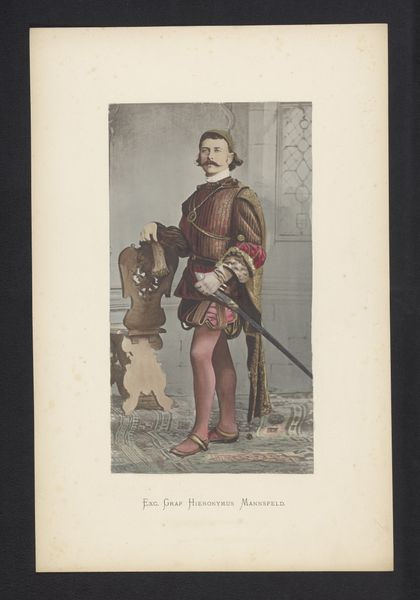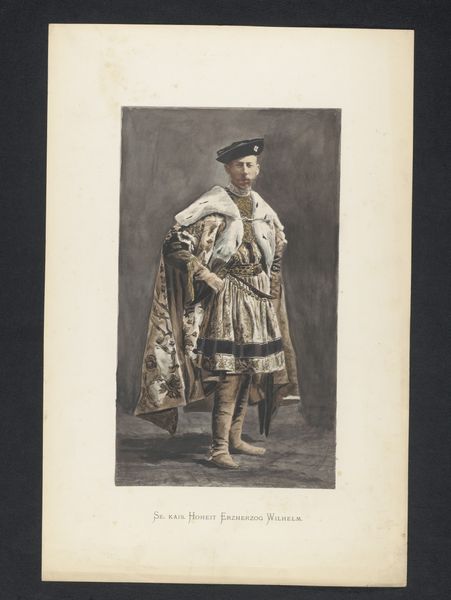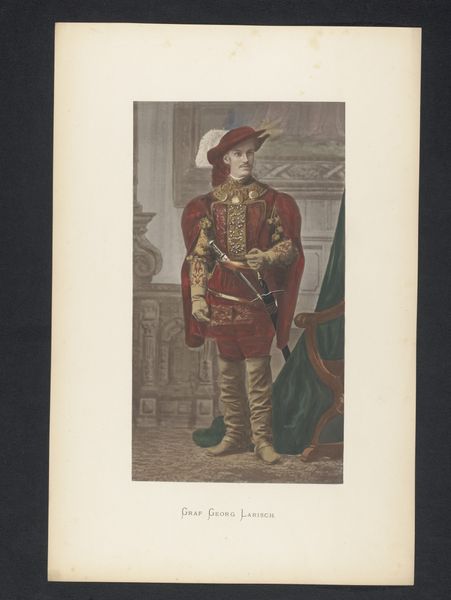
#
portrait
#
aged paper
#
antique finish
#
pale palette
#
reduced colour palette
#
muted colour palette
#
pale colours
# print
#
centered image
#
white palette
#
neutral colour
#
centered on page
#
genre-painting
#
history-painting
#
academic-art
#
realism
Dimensions: height 362 mm, width 187 mm
Copyright: Rijks Museum: Open Domain
Editor: This is "Portret van graaf Georg von Stockau," likely from between 1880 and 1884. It’s a print. The details in the Count’s clothing are quite remarkable. What catches your eye about it? Curator: Well, let's think about printmaking at the time. This wasn't about unique artistry in the way we often frame painting. It's a reproduction. I immediately consider the social and economic conditions driving the demand for these kinds of images, the mechanics of their distribution. Who consumed it, and what function did this image serve? Was it propaganda? Documentation? Aspirational display? Editor: So, you're less concerned with the artistic intent and more with its role as a commodity? Curator: Precisely! We need to deconstruct this 'portrait' and view it through the lens of material production. The paper, the ink, the printing process…these are all loaded with socio-economic meaning. Even the way it's centered screams industrial standardization! Think of the labour involved, the machinery. This "art" exists within a larger network of manufacturing and distribution. How accessible was this? Did it perpetuate existing class structures, or subvert them in some way? Editor: That’s interesting. I never really considered a portrait as a mass-produced item before. So, rather than the Count himself, you're looking at the context that produced the *image* of the Count? Curator: Exactly. We need to think beyond the individual and consider the processes that gave this object its form and meaning. What were the political and social investments in image making like this? How did the materiality contribute or clash with that? Editor: This really changes how I see portraits, thinking about them less as representations of individuals and more as products of specific industries and power structures. Thank you! Curator: It’s about shifting our focus from aesthetics to the concrete conditions of production. We need to be materially aware!
Comments
No comments
Be the first to comment and join the conversation on the ultimate creative platform.
